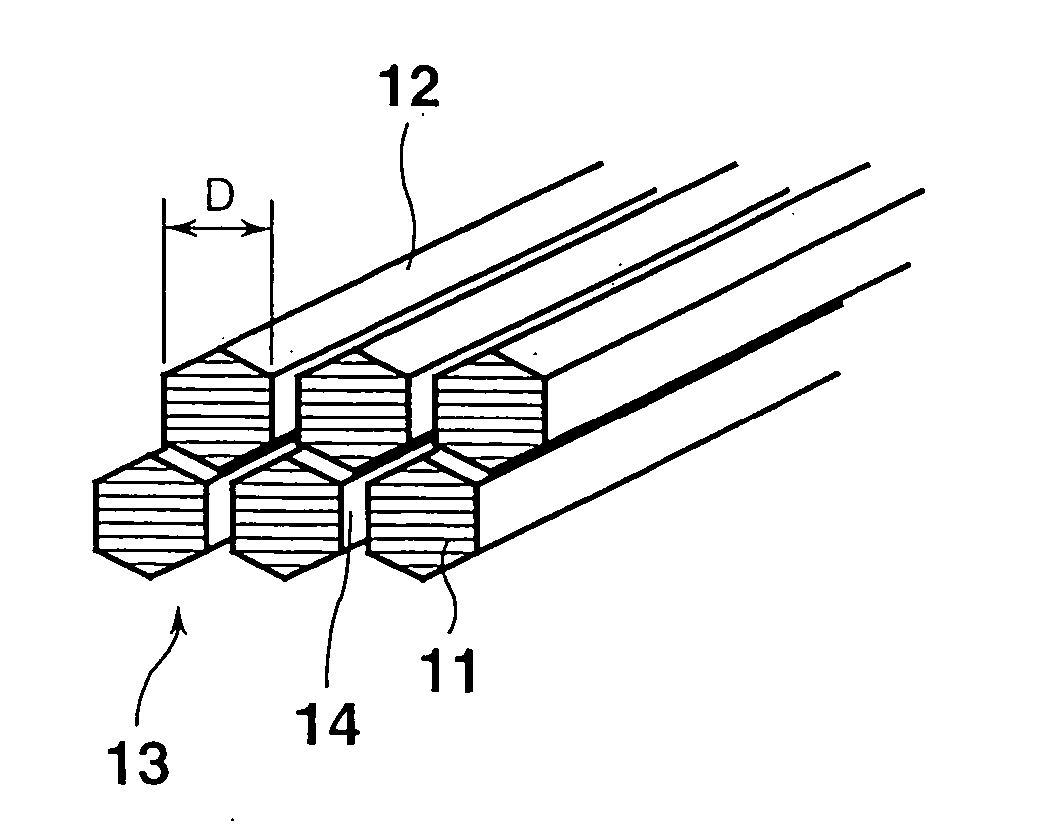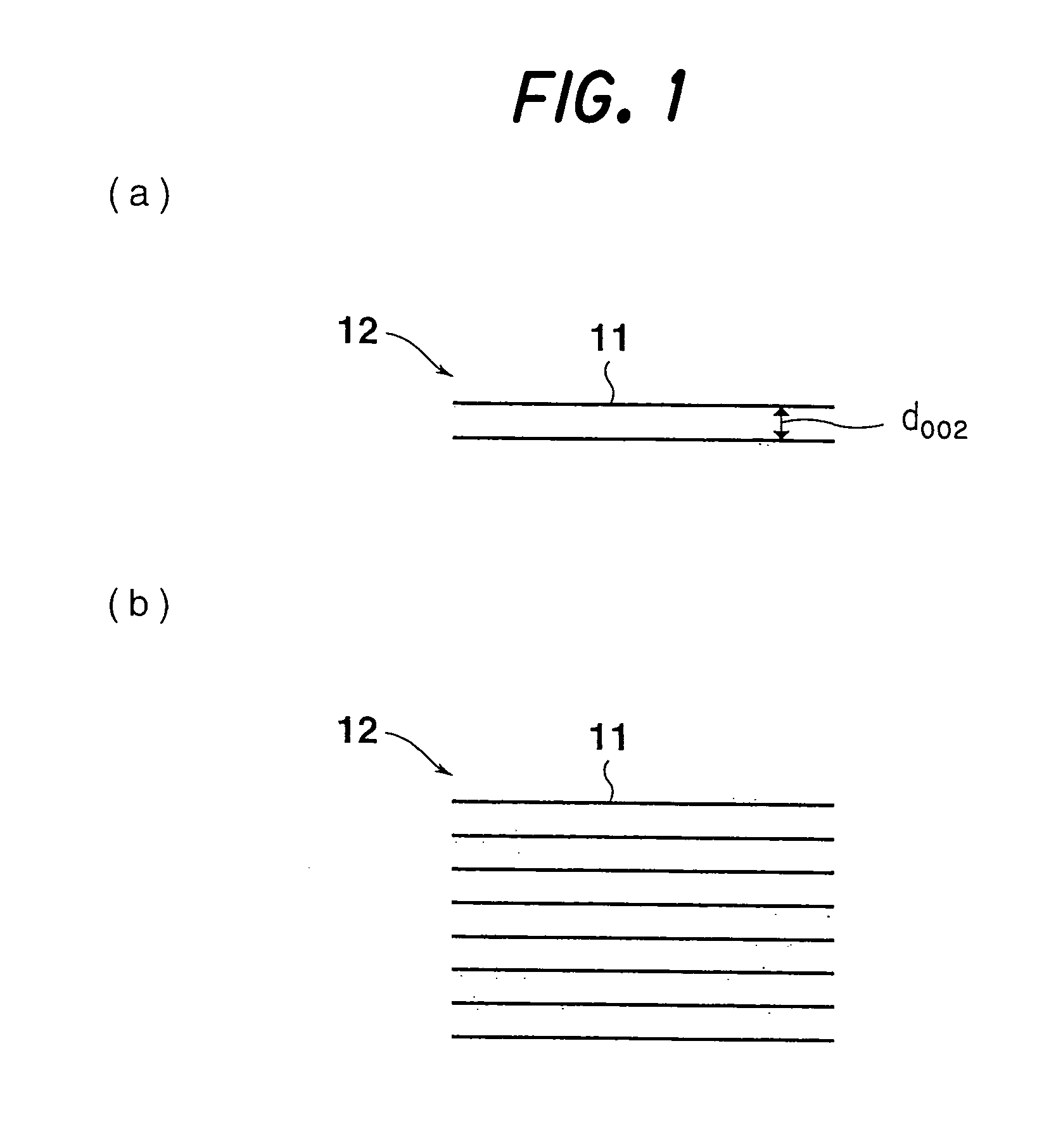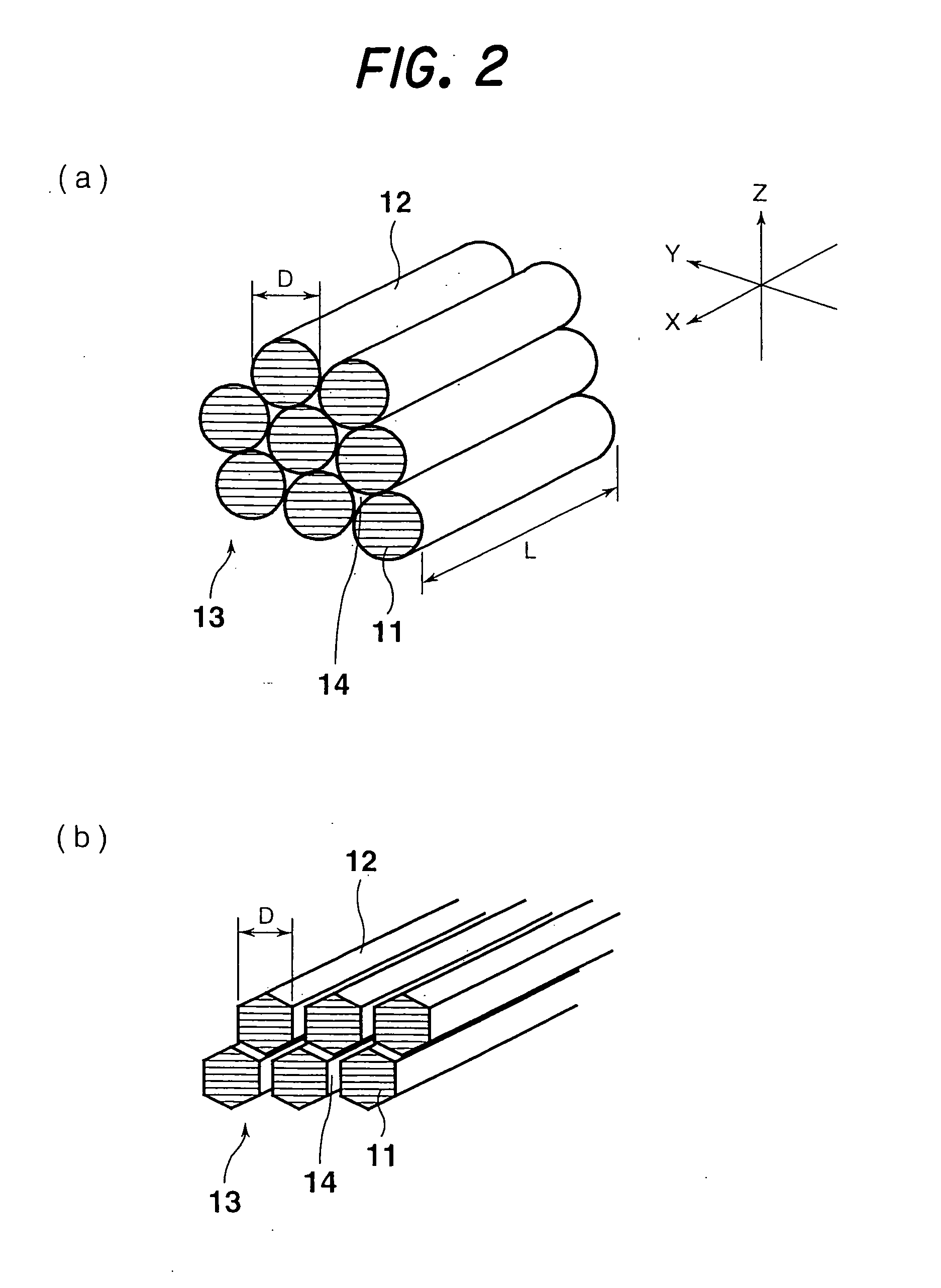Carbon nano-fibrous rod, fibrous nano carbon, and method and apparatus for preparing fibrous nano carbon
- Summary
- Abstract
- Description
- Claims
- Application Information
AI Technical Summary
Benefits of technology
Problems solved by technology
Method used
Image
Examples
example 4
[0263] The present example is an example in which the fibrous nanocarbon of Example 3 was heat-treated at a high temperature.
[0264] That is, the fibrous nonocarbon prepared in Example 3 was heated-treated for 10 minutes at 2,000° C. and 2,800° C. in an argon atmosphere.
example 5
[0265] The present example is fibrous nanocarbon of a tubular structure.
[0266] A iron-nickel alloy catalyst was prepared by the precipitation method of Example 1 with the use of iron nitrate and nickel nitrate.
[0267] Concretely, 11.90 g of nickel nitrate (NiNO3.xH2O: a first class grade chemical, Wako Pure Chemical Industries) and 11.80 g of iron nitrate (FeNO39H2O: a first class grade chemical, Wako Pure Chemical Industries) were added to 200 ml of pure water in order to prepare 4 g of an iron-nickel catalyst, and the mixture was slowly stirred to prepare a solution. To the solution, ammonium hydrogen carbonate (NH4HCO3, a first class grade chemical, Junsei Yakuhin Kogyo) was added with stirring until a precipitate (NiCO3 xH2O) was formed. Then, the precipitate was filtered off, and purified with pure water until ammonium hydrogen carbonate vanished. Then, the precipitate was filtered off, and purified with pure water until ammonium hydrogen carbonate vanished. The purified preci...
example 6
[0270] The present example is an example in which the fibrous nanocarbon of Example 5 was heat-treated at a high temperature.
[0271] Concretely, the fibrous nonocarbon prepared in Example 5 was heated-treated for 10 minutes at 2,000° C. and 2,800° C. in an argon atmosphere.
>
[0272] The fibrous nanocarbons (150 mg) obtained in Examples 1 to 6 were each mixed with 15 mg of standard silicon, and diffraction at angles of 5° to 90° was performed (CuKα rays, 40 kV, 30 mA, stepwise method) using a wide angle X-ray diffractometer (a product of Rigaku), whereby diffraction patterns were obtained.
[0273] From the resulting X-ray patterns, the interplanar distance (d002), the size of the stack (Lc002) and the size of the crystallite (La110) were calculated by the Gakushin method. The results are shown in the aforementioned Table 1.
>
[0274] To investigate the fiber diameter and structure of the fibrous nanocarbon obtained in each of Examples 1 to 4, the fibrous nanocarbon was observed under an ...
PUM
 Login to View More
Login to View More Abstract
Description
Claims
Application Information
 Login to View More
Login to View More - R&D
- Intellectual Property
- Life Sciences
- Materials
- Tech Scout
- Unparalleled Data Quality
- Higher Quality Content
- 60% Fewer Hallucinations
Browse by: Latest US Patents, China's latest patents, Technical Efficacy Thesaurus, Application Domain, Technology Topic, Popular Technical Reports.
© 2025 PatSnap. All rights reserved.Legal|Privacy policy|Modern Slavery Act Transparency Statement|Sitemap|About US| Contact US: help@patsnap.com



